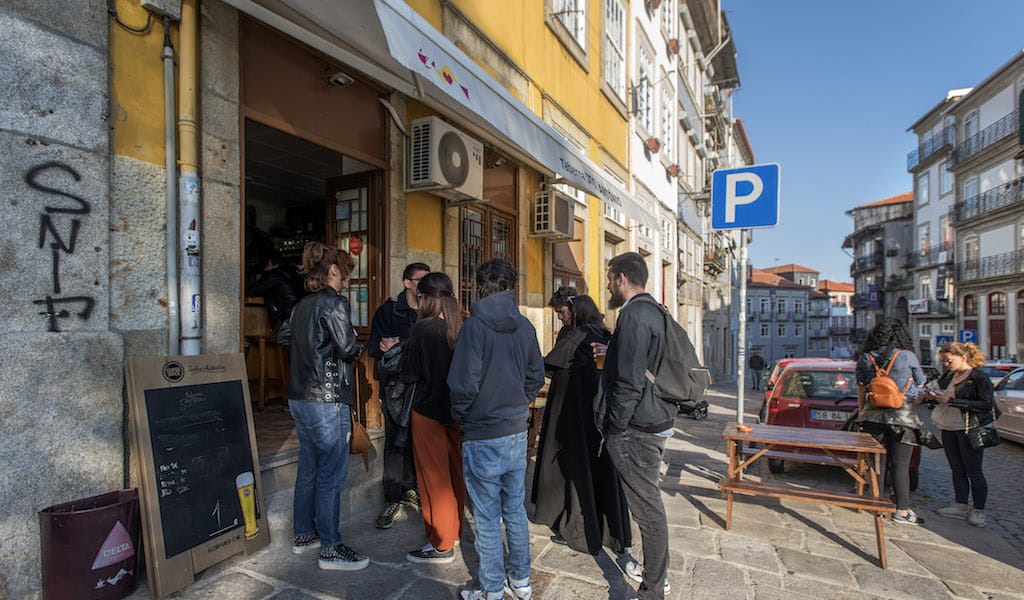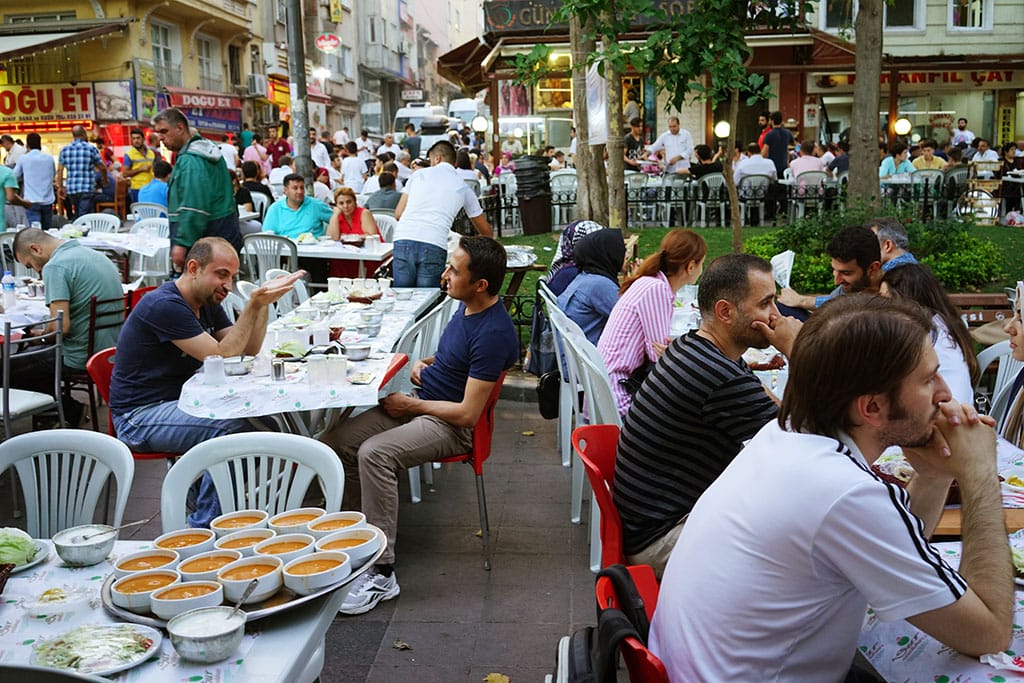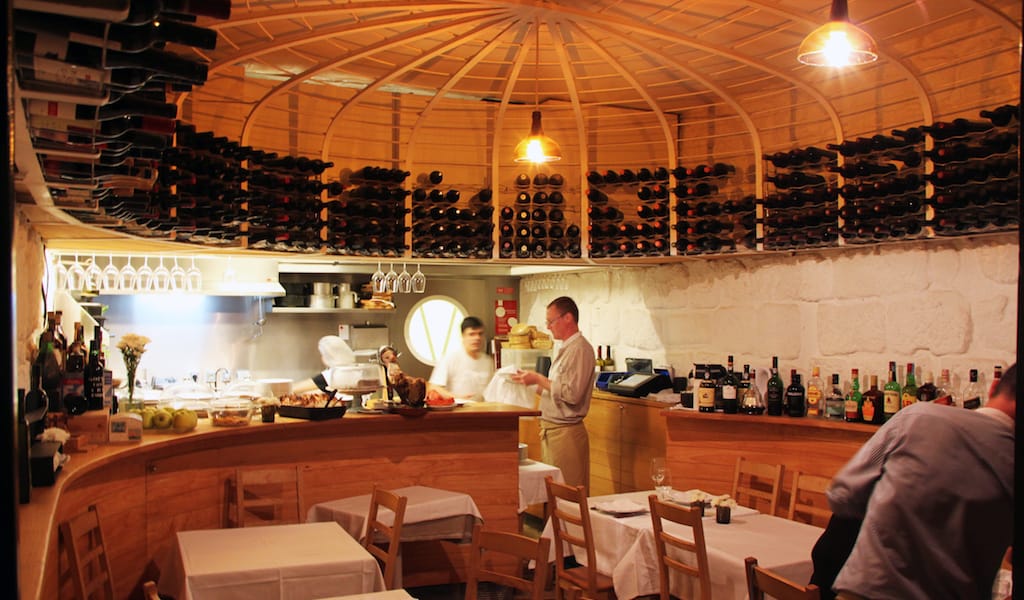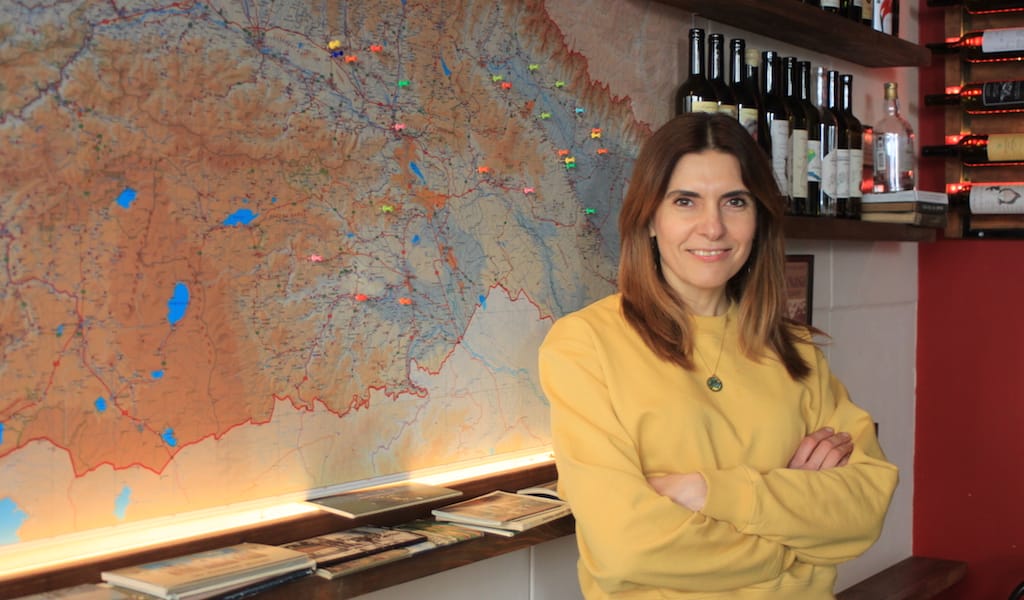We arrived at Taberna Santo António after lunch, looking for a bit of warmth in the middle of winter. It wasn’t a shot in the dark – we already knew that we would be enveloped by a comforting hospitality at this classic Porto spot.
The sun was shining, so we sat on the terrace with Pedro Brás, whose parents own Taberna Santo António. “We’ve been here for 30 years in March,” he said. And while nowadays the surrounding landscape is inviting – just around the corner is the Parque das Virtudes, where crowds congregate in the late afternoon to listen to music, chat and drink beer as the sun sets over the Douro River – that was not always the case.
“This was a poor, degraded neighborhood with lots of drugs and prostitution,” recalled Pedro. “No one wanted to live here.” But Hermínia, his mother and the soul of the taberna, needed a “place where her son could study” and that’s how the family left Mêda in Foz Côa, a rural area in northeastern Portugal, in the early 1990s and moved to the big city, taking over this corner store from a distant relative.

Pedro remembers well this time, especially the “bairrismo [a deep sense of neighborhood] and the people who came here to have breakfast wearing pajamas and slippers.” Fish was sold and clothes were hung out to dry on this corner.
“At that time we only served breakfast, lunch, and snacks,” he said, “little things.” Like the typical francesinha as well as small pieces of finely sliced pork liver, octopus salad with onions and parsley, codfish fritters, pig’s ears and buchos (stuffed pig’s stomach). All described using the diminutive, of course, but this does not deceive anyone who eats in Porto.
“When four o’clock came, the button seller, the ironworker, the locksmith and the carpenter stopped by. The space filled up,” Pedro said. Over the years, however, these workmen disappeared from the area, their workshops slowly replaced by hotels, cafés and restaurants.
“No one leaves here without eating,” he assured us.
Over the course of our conversation with Pedro, we didn’t see anyone in pajamas but we did see many friends enter the taberna (including the former owner who keeps coming for both the snacks and the conversation). These are people who call each other by name, who inquire after each other’s health and can’t resist saying hello to Pedro, always with a polite “sorry to interrupt, miss.”
It’s no problem – everyone is family here. Pedro’s approach to customer service is quid pro quo. “This is Porto’s way,” he explained. “Whoever comes with sympathy, will have everything they want, will be treated like a king. Whoever arrives with no good manners, neither good morning nor good evening, will receive equal treatment.”
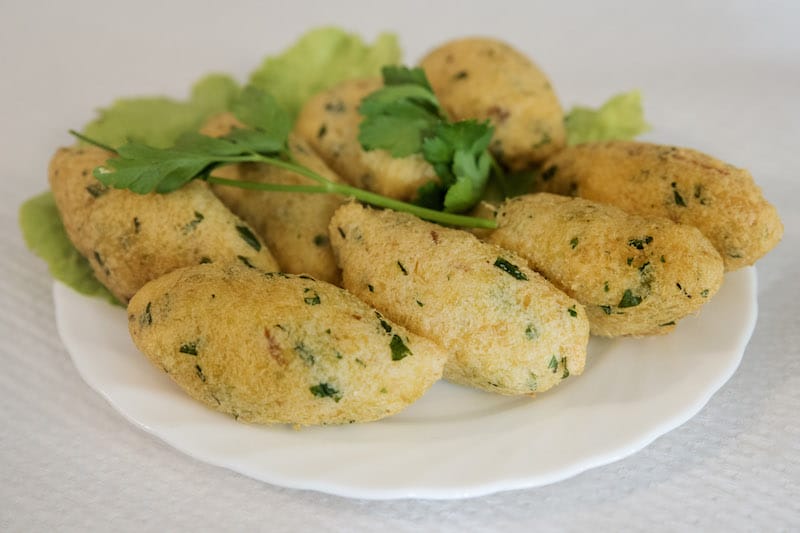
The service may be Porto’s way, but at the table, the flavors blend with those of Trás-os-Montes, a region close to Foz Côa. “My mother makes food the village way,” said Pedro. “In all the dishes we try to use products from [Foz Côa] – the sprouts, the potatoes, the cheeses, the sausages and even the wines that I sell, 80 percent are from my land.” Since space is tight they have no storage capacity, which means that everything is cooked almost immediately – no repeating dishes for a week here. “We cook according to what the suppliers tell us that they have, at the moment, that is best,” he continued.
And the best are dishes that fill you up just by uttering their names: fried rice with beans; Porto-style tripe; arroz de cabidela (chicken blood rice); Portuguese stew; and papas de sarrabulho (a type of bloody porridge made with pork and chicken meat, pig’s blood and sausages), “everything homemade.”
“We’re also famous for our desserts,” he added, “like our chocolate mousse and chocolate cake.”
But all this is the result of adapting – at least somewhat – to the trends. In the late 1990s, Pedro’s mother started making a large pot of food for dinner, which was intended just for her, her son and her husband, but “after all, there was already a big family, us and the customers, around the pan. We all ate the same,” said Pedro. At Taberna Santo António, no one was going to go hungry.
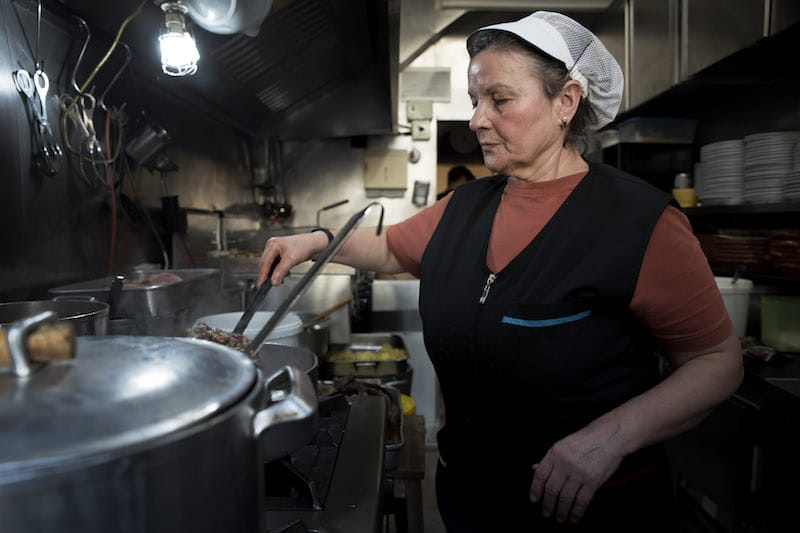
As they started serving more options, they also increased the team: today they are six. Pedro puts his foot down at remodeling, though. He doesn’t see the point in making the space more modern. “I’d rather keep the original,” he said. “If it’s working why are you going to change it? I adapt, but I do not feel that people are looking for the gourmet.”
One concession he has made is the introduction of a vegetarian dish in the summertime, although “no one leaves here without eating,” he assured us.
Pedro studied economics and computers, and then worked for a long time in architecture firms after serving in the military. But now his sole focus is Taberna Santo António, which he believes should stay in the family. Moreover, he’s dedicated to keeping up the traditional ways. “How many restaurants still make homemade fries?” he asked. It’s a small detail, but one that matters to him. “Today I had some Americans here who left the fries. They missed out on tasting homemade fries. It is in these little things that we try to make a difference and continue with the homemade products and the old fashioned things,” he said.
Contrary to a Portuguese saying, we began to doubt that “virtue is in the middle.” We went instead to find her on a corner in the city of Porto.
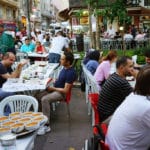 June 7, 2018 Fast Food
June 7, 2018 Fast Food
Ramadan fasters in Istanbul may not love the endless daylight hours in summer nor the […] Posted in Istanbul June 29, 2019 Taberna dos Mercadores
June 29, 2019 Taberna dos Mercadores
Seating around only 20 people, Taberna dos Mercadores is a microcosmic reflection of […] Posted in Porto March 2, 2020 Dadi Wine Bar
March 2, 2020 Dadi Wine Bar
Last June, Georgian lawmakers invited a Russian legislator to address an international […] Posted in Tbilisi
Published on April 09, 2019
Related stories
Meet the man behind the famous pit-roasted lamb on the Old City walk!
June 7, 2018
Istanbul | By Malika Browne
IstanbulRamadan fasters in Istanbul may not love the endless daylight hours in summer nor the susuzluk (no water), but when the reward is a leisurely iftar under the trees on Kadınlar Pazarı, the pedestrianized market known as Little Siirt (named after the southeastern Turkish city where many of the local shop and restaurant owners hail…
June 29, 2019
PortoSeating around only 20 people, Taberna dos Mercadores is a microcosmic reflection of contemporary Porto: a mixture of high-concept design and traditional food. From a design perspective, the focal point of the small yet comfortable dining room is the ceiling, where white metal supports create the outline of a false dome. Although sculptural in nature,…
March 2, 2020
TbilisiLast June, Georgian lawmakers invited a Russian legislator to address an international assembly of Christian Orthodox devotees from the Speaker of Parliament’s chair. This, predictably, did not go over well. Thousands poured into the streets and gathered at the Tbilisi parliament building demanding explanations, resignations and reform from a government many believe is much too…







































